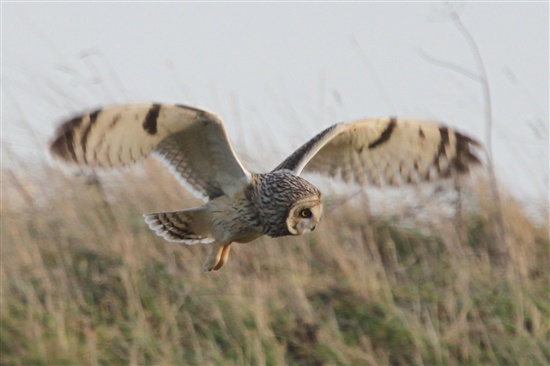Look carefully as you come up the main drive to the car park. There is a Short-eared Owl currently hunting along either side of the drive, around the workshop, over the Discovery Zone and in front of the Wildlife Watchpoint Hide.

Short-eared Owl by Lockhart Horsburgh
These are birds that breed on open uplands and move to marshes and coastal grasslands in winter, but the birds that winter here tend to have arrived from…